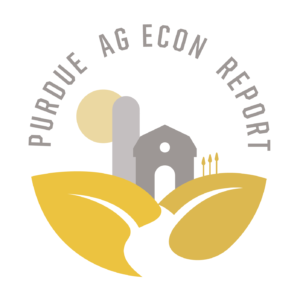Butter Softens the Squeeze of Dairy Farms Margins
October 23, 2011
PAER-2011-15
Nicole Olynk, Agricultural Economics and Mike Schultz, Animal Science
Class III (milk for cheese) prices usually drive the overall milk price and have averaged $18.18 per hundred weight for the first eight months of 2011. Despite strong milk prices, volatile-and high-feed costs are threatening to squeeze dairy producer margins. USDA’s milk-to-feed price ratio for August 2011 was 1.89, down from 1.92 in July 2011. Despite higher milk prices in 2011, rising feed costs have caused the decline in the milk-to-feed price ratio from 2.36 in August of last year.
Total supplies of wheat, feed grains, and soybeans are currently forecasted by the USDA to be 4.3% smaller than supplies from a year ago. Volatile feed prices have the potential to squeeze producer’s margins. Corn and soybean prices are part of the equation, but rapidly rising hay prices also have the potential to challenge dairy farmers this year as forages play a major part in the volatility of dairy ration costs. Alfalfa baled hay was $191/ton in August, up from $189/ton in July and a major increase from the $118/ton from August 2010. Dairy farms better able to control their own feed production, specifically forage production, may be best positioned to survive the volatile feed prices.
Milk production is expected to rise in 2012 by 1.4%, primarily on more production per cow. This will tend to depress milk prices. In 2011, all milk prices averaged about $20.25 per hundredweight and are expected to drop to only $18.30 for 2012. There are reasons for optimism and also for caution. On the optimistic side, butter demand is strong, export markets are continuing to gain steam, and butter inventories are at historically low levels. On the side of caution, cheese stocks are at historic highs.
Dairy policy has been garnering attention, fueled first by the dismal milk prices of 2009 and now the increasingly tight margins felt with high feed prices. Several comprehensive proposals for dairy pricing reform have attracted their own supporters and detractors. Briefly, the plans put forth as the Federal Milk Marketing Improvement Act of 2009 (Specter-Casey Bill) and the Foundation for the Future Plan (National Milk Producers Federation), which was largely adopted in proposed legislation by Colin Peterson (D-MN), have generated much discussion about supply management, margin protection, and Federal Order Reform. Dairy will be an important topic in the U.S. Congress during the Farm Bill debate or sooner. Significant changes to dairy policies are possible, if not likely.

